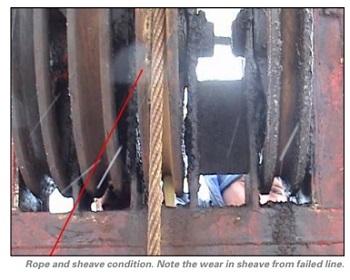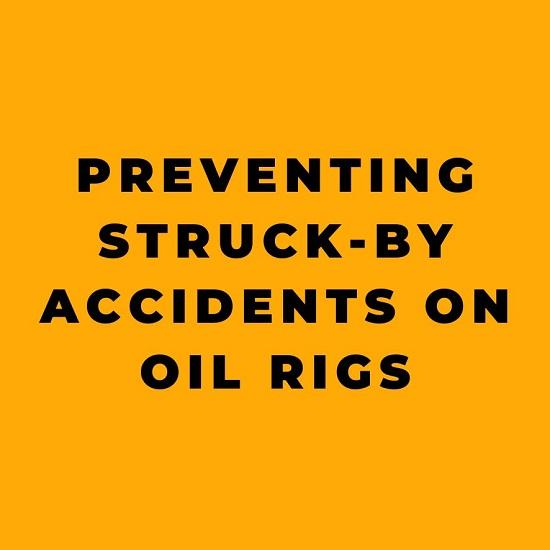Introduction
Occupational accidents resulting in injuries or fatalities are unfortunately still too common in certain industries, highlighting the continued need for stringent safety protocols and preventative practices. The provided case details a tragic incident in the oil and gas sector where a rig hand was struck and killed by a falling load block after a wire rope hoisting line failed.
Thorough examination of this incident reveals critical lessons and reminders about establishing comprehensive equipment inspection procedures, following proper wire rope care guidelines, implementing maintenance programs to avoid slippage and cutoff events, calculating service lifespans, and training workers appropriately. Applying these learnings can prevent recurrence of such accidents, saving lives and preserving the wellbeing of employees in hazardous occupations.
Accident Summary Overview
On the day of the incident, a crew of six workers were carrying out casing retrieval operations on a double mast service rig at a gas well site. It was a cold, snowy day during regular daytime working hours. An experienced 31-year old male rig hand was working below the rig’s load block when the load line unexpectedly snapped. The load block fell rapidly, delivering fatal blunt force trauma to the worker’s upper body.
Investigation into the failed wire rope hoist line revealed that it was a 6×40 7/8” diameter line that had already accumulated approximately three years of service. The poor condition of the rope was characterized by several broken wire strands. This indicated inadequate daily and monthly inspection protocols for early damage detection.
Additionally, the failed line showed signs of significant wear from sustained improper contact with the draw works guard. This was evidenced by noticeable markings left on the guard itself. The direct contact likely accelerated degradation, rusting, and embrittlement of the wire rope over time due to friction and abrasion forces. Proper preventative maintenance through lubrication was also found to be likely inadequate despite being reportedly carried out routinely. The failed rope was dry and brittle upon later examination.




Key Factors and Recommended Practices
Regular Inspections
The first critical accident prevention measure is performing consistent visual checks on all rig hoisting system components. American Petroleum Institute (API) Recommended Practice 54 specifically calls for hoisting lines to be visually inspected at minimum once per day when in use, with thorough monthly inspections also conducted to log any defects found. This rigorous inspection regimen allows early detection of damage or wear issues before they compromise line integrity and lead to failure under load.
Proper Lubrication
In tandem with vigilant inspections, hoisting lines must follow field lubrication guidance prescribed by wire rope manufacturers. Frequent rope lubrication maintains smooth operation, prevents corrosion and metal fatigue, and extends service life. API Recommended Practice 9B reinforces using only compatible lubricants explicitly recommended for the specific wire rope to deeply penetrate and adhere to the strands.
Controlled Slippage and Cutoff
Implementing maintenance protocols focused on managing slippage and cutoff events further safeguards hoisting system reliability. As outlined in API RP 9B, techniques like tension monitoring, controlled descent devices, frequent lubrication, and managing fleet rotations preserve wire rope integrity despite unavoidable transitional strains from slipping or cutting off lines.
Defined Service Limits
In addition to condition-based assessments, tracking measured usage metrics provides proactive guidance on hoisting line replacements. API RP 9B describes best practices for analytically determining service lifespans based on ton-mile limits considering working loads, line sizes, and other operating conditions. Sticking to predetermined usage ceilings before retirement minimizes the risk of failures.
Responsive Maintenance
Regardless of lines still within formulated service limits, any identified structural damage or compromised functionality warrants immediately removing hoisting equipment from operational use. As stated in API RP 54 (American Petroleum Institute), defects like broken strands, excessive wear, or stretching require prompt line replacement to avoid potential catastrophic failures.
Worker Training
Finally, sufficient worker training in inspection norms, maintenance duties, and safety protocols completes the spectrum of strategic protections against hoisting accidents. Employees should have strong working knowledge of rope exam criteria, preventative care principles, and hazard avoidance to contribute to a culture of responsibility and risk mitigation. Equipped with proper understanding and skills, they can proactively contribute to accident prevention.
The outlined recommendations demonstrate that a multi-pronged approach covering robust inspection, care, analysis, upkeep, and training protects system dependability and significantly lowers safety incident risks. Responsibly applying these industry best practices safeguards employees and assets during drilling and rigging work involving hoisting lines and suspended loads.
Conclusion
While adverse events still occur in hazardous industries, following essential safety protocols can significantly mitigate occupational hazards and prevent loss of life. As highlighted by analysis of this specific incident, practices like routine inspections, preventative maintenance, controlled service periods, and worker education serve as multiple barriers against potentially fatal accidents on worksites. Responsible implementation of these recommendations demonstrates commitment to employee wellbeing as well as overall operational excellence. The lessons gleaned motivate ongoing safety improvements to achieve the vision of accident-free worksites across all sectors.
References:










